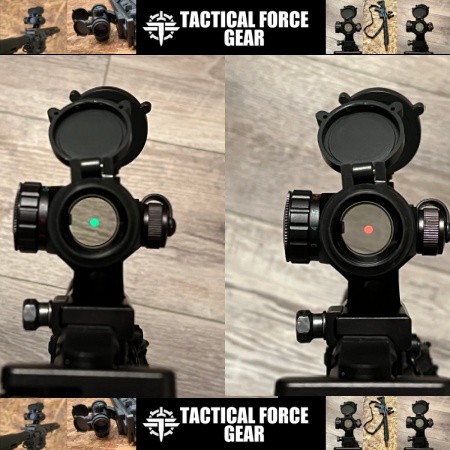Tungsten Super Shot is the hottest thing to hit the turkey hunting world since the pop-up blind, but still, so many hunters don’t understand its performance — or its limitations.
In hopes of shedding some light on this very dense, wildly expensive, and unnecessarily controversial pellet material, I sat down with Adam Moser, the director of product engineering for shotshells at Federal Premium. Federal, after all, was the first major ammo company to widely offer TSS loads. I also caught up with my fanatical turkey hunting buddy Josh Dahlke, the VP of content for HuntStand. Dahlke has witnessed more than 100 turkeys get shot with TSS loads. If anyone can explain the physics behind TSS, it’s Moser. If anyone can detail its turkey killing capabilities, it’s Dahlke.
What Is TSS, Exactly?
The term TSS is reserved for a Tungsten-based pellet material that has a density of about 18 g/cc. For reference, lead shot has a density of about 11.2 g/cc. A TSS pellet is 95 percent tungsten and 5 percent nickel and iron — these metals help to bind the shot material. TSS is formed through metal injection molding, which can be roughly described as taking a mixture of metal powders and heating them up and then molding them into a spherical shape. The pellets are then hardened, ground, and polished for their final size and finish.
This manufacturing process and the cost of harvesting tungsten from the earth are what drive up the cost of TSS, Moser says.
“Lead is about 1 to 2 dollars per pound and tungsten is 30, 35, to 40 bucks per pound, depending on where you’re getting it from,” he says.
Are TSS Pellets Actually Heavier?
Size being equal, yes, TSS pellets are significantly heavier than lead pellets. However TSS pellets typically come in smaller shot sizes than what turkey hunters shoot when utilizing lead pellets. The most common pellet sizes for TSS are No. 7s and No. 9s. The most common pellet sizes for lead turkey loads are No. 5s and No. 6s.
| Shot Material | Pellet Size | Weight per Pellet | Pellets per Ounce |
| Lead | No. 5 | 2.5 grains | 170 |
| TSS | No. 7 | 2.3 grains | 188 |
| Lead | No. 6 | 1.9 grains | 225 |
| TSS | No. 9 | 1.2 grains | 362 |
As you can see in the chart, a No. 5 pellet is slightly heavier than a No. 7 TSS pellet and significantly heavier than a No. 9 TSS pellet.
So What Is the Advantage of Shooting TSS?
The real advantage of shooting TSS comes from pellet penetration and pattern density at distance. Let’s discuss penetration first.
Here’s the basic physics concept to understand: smaller, denser pellets retain velocity better and penetrate better than larger, less dense pellets. If you want the math on this, then Moser says it’s more useful for turkey hunters to look at penetration energy than kinetic energy. Penetration energy is the measure of pellet energy per cross-sectional area, Moser says. In other words, it is the kinetic energy of the pellet divided by its surface area, also referred to as the 2D area of the pellet (Ke=1/2 mv^2).
Here’s a sample of penetration energy generated from 1200 FPS muzzle velocity at 40 yards.
- No. 7 TSS pellet: 535 ft-lb/in²
- No. 9 TSS pellet: 374 ft-lb/in²
- No. 5 lead pellet: 241 ft-lb/in²
- No. 6 lead pellet: 205 ft-lb/in²
As you can see, both TSS pellet sizes carry far more penetration energy at 40 yards than the lead pellet sizes.
Pellets kill a turkey by penetrating its vitals, specifically the central nervous system (spinal cord and brain). You want to see several pellet strikes in the head and neck. A dense pattern is key and this is where TSS really outperforms lead, especially TSS No. 9 shot. Because of the small shot sizes TSS loads offer far higher pellet counts than lead turkey loads. Here’s a quick look at pellet counts.
| Pellet Material & Size | Payload | Pellet Count |
| TSS No. 9 | 1 3/4 oz. | 634 |
| Lead No. 6 | 1 3/4 oz. | 394 |
| TSS No. 7 | 1 3/4 oz. | 330 |
| Lead No. 5 | 1 3/4 oz. | 298 |
Also, because TSS is so hard, there’s less pellet deformation, fewer flyers, and better overall pattern efficiency.
At What Distance Can You Kill a Turkey with TSS?
You’ll certainly hear tales of hunters killing turkeys with TSS at 70 yards and beyond. But this does not mean you should attempt shots at these ranges. Every hunter needs to establish their own maximum effective range with their setup and skills. With TSS the critical factors are pattern density (not penetration energy) and your shooting ability.
For an effective killing pattern, there’s a long-standing guideline of 100 pellets or more in a 10-inch circle. This ensures several pellet strikes in the head and neck, as long as you put the core of your pattern on target (read our guide on where to shoot a turkey). The best 12-gauge turkey shotguns paired with an appropriate choke will accomplish this with a TSS turkey load from 40 to 60 yards. In my review of the best .410 turkey loads, I was able to consistently put 100 or more pellets on target at 40 yards with several TSS load/gun combinations.
You might have to do some experimenting with different chokes and load combinations to make it happen. Just remember that if you optimize your pattern for long range, it will become ultra-tight at short ranges, which makes it much easier to miss a close-range bird.
So what about pellet energy? The traditional rule of thumb was that you need a minimum of 2.5 ft-lbs per pellet in order to kill a turkey. But this idea comes from a history of shooting lead loads and isn’t applicable to TSS pellets.
“Under that guideline, a No. 9 TSS pellet would not have enough energy to kill a turkey at 35 yards, which we know is not true,” says Moser.
Dahlke knows from years of field experience that a solid pattern of TSS will kill a turkey at 60 yards with good shooting, every time. And that’s where he sets his personal maximum distance. The only way to set your own max shooting distance is by doing some honest patterning work. Simply find the range at which you and your setup can no longer put about 100 TSS pellets within a 10-inch circle over the center of your target consistently, then don’t shoot beyond that range.
If all goes well, this will cost you about a box of turkey loads (which will be about $65 if you’re shooting a 12 gauge). My process is to first get my shotgun sighted in with cheaper target loads. Then I’ll shoot one TSS load at 40 yards. Assuming it throws a good pattern of about 250 or more pellet strikes within a 10-inch circle, I’ll move back to 60 and shoot three patterns. If at that range I’m consistently putting about 100 pellets inside a 10-inch circle over the heart of my target, then I know I’m good to go. If not, I know I have to limit myself to closer shots or start experimenting with different chokes and loads.
Read the full article here




